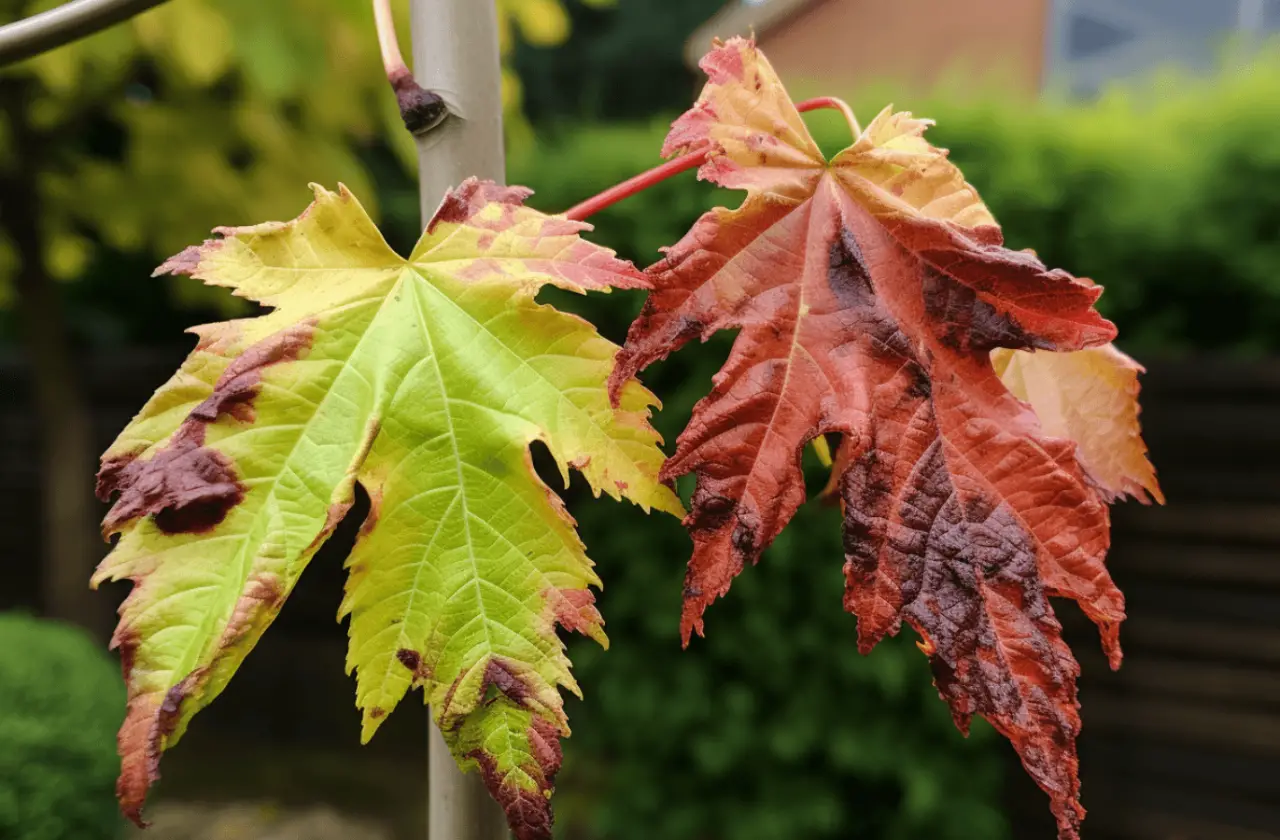5 Common Acer Tree Problems and How to Address Them

Acer trees (also known as Japanese maples) are known for their stunning foliage and elegant forms. They can sometimes face challenges that can threaten their health and vitality – often making you wonder “Why is my Acer dying?” – but we’re here with some top tips.
Understanding these issues is key to ensuring your Acer thrives. Here are five common problems encountered when growing Acer plants, including leaf scorch, Verticillium wilt, and pest infestations, along with solutions to address them.
1. Leaf Scorch
Issue: Leaf scorch is a common problem in Acers, often caused by environmental stress such as wind, drought, or excessive sunlight. If you have placed your Acer in full sun, then it may be at risk from lead scorch – especially in the height of summer. Likewise, scorch can be caused by wind so ensure your tree isn’t placed in an area that is open to the elements.
Solution: To prevent leaf scorch, plant your Acer in a location that receives dappled sunlight or is placed within partial shade and sheltered from strong winds. Ensure regular watering, especially in dry conditions, to keep the soil consistently moist – but as we come on to later, make sure to not give excess water to your Japanese maple.
2. Verticillium Wilt
Issue: This fungal disease can be devastating, leading to wilting and death of branches. It’s often indicated by yellowing or browning leaves and streaks in the wood. Wilt can be present in the root system of trees and can remain dormant for some time, unfortunately meaning it’s not always apparent when a plant is infected.
Solution: There’s no chemical cure for Verticillium wilt, but you can manage its impact. Remove and destroy affected parts of the plant, improve soil drainage, and avoid water stress to help your Acer recover. Depending on how your plant was grown, it might be possible that the impact is just some dying off of the tips – but you may also lose whole parts of your plant, so keep an eye out.
3. Pests
Issue: Acers can attract various pests, including aphids, scale insects, and mites, which can damage the plant by sucking sap from the leaves and stems. If you suspect your plant has started to show signs of a pest attack, then you’ll be pleased to know that there is plenty you can do to stop them early in their tracks and nurse your Acer back to good health.
Solution: Regularly inspect your Acer for pests. Treat infestations with insecticidal soap or neem oil. Encouraging natural predators like ladybirds can also help control pest populations and is a great way to ensure you are only using natural methods of insect control as many chemical-based methods can cause wider ecological damage.
4. Improper Watering
Issue: Both overwatering and underwatering can stress Acers, leading to poor health and increased susceptibility to diseases.
Solution: Ensure your Acer is in well-draining soil. Water to keep the soil moist but not waterlogged, and adjust your watering schedule based on weather conditions.
5. Soil pH Imbalance
Issue: Acers are known for their preference for slightly acidic to neutral soil conditions. When the soil becomes too alkaline, it can lead to a pH imbalance, which affects the plant’s ability to absorb essential nutrients, particularly iron. This imbalance can cause chlorosis, where leaves turn yellow while their veins remain green, and overall growth can be stunted.
Solution: Regularly testing the soil’s pH around your Acer is crucial in maintaining the optimal environment for its growth. If you find the soil is too alkaline, there are several ways to adjust it. Incorporating ericaceous compost, which is specifically formulated for acid-loving plants, can help lower the pH. Additionally, using soil acidifiers like sulfur or iron sulfate can effectively reduce soil alkalinity. It’s important to apply these amendments according to the manufacturer’s instructions and retest the soil periodically to avoid over-acidifying.
Another approach is to use mulches derived from pine needles or bark, which can gradually acidify the soil as they decompose. Remember, changing soil pH is a gradual process and requires patience. It’s also essential to ensure that the soil remains well-draining, as poor drainage can exacerbate pH imbalance issues.
Conclusion
By addressing these common issues, from environmental stressors like leaf scorch to diseases like Verticillium wilt and pest infestations, you can help your Acer plant thrive. Regular monitoring, appropriate care, and preventive measures are key to enjoying the beauty of Acers in your garden.





